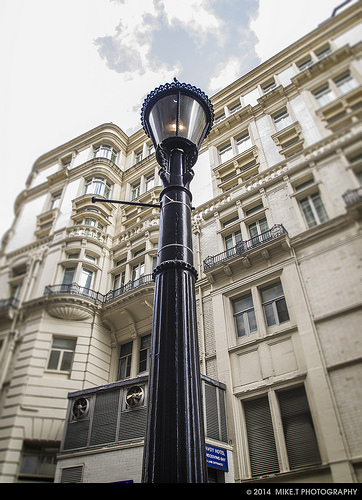Farting Lane
You have to admit that it doesn’t sound particularly attractive, but there it is, tucked away behind the world famous Savoy Hotel. A fabulous piece of Victorian engineering at its best. If you can’t guess already, the street gets its rather unsavoury name from the sewage powered street lamp, the last one in the city. The marvel of modern engineering was invented in the latter half of the nineteenth century by a man named Joseph Webb. This inventive inventor hailed from Birmingham and designed the lamp to solve two major issues in the city at that time. One of course was a way to keep the city’s streets well lit at night for the minimal amount of cost, and the other in this two birds with one stone approach was to do something with the noxious fumes that emanated from the vast system of sewers than run beneath the city. This marvellous lamp both burned off those nasty fumes and kept the streets safely lit.

Twenty Four Hour Service
The sewers never sleep and so the lamps provided a round the clock illumination service. The smelly methane gas from the sewers below the city streets was collected in a purpose built dome in the top of the sewer structure and this collection of gas was then diverted into the lamps that were positioned on the street above. Part of the fuel supply that kept this lamp so particularly well lit came from the exclusive Savoy Hotel and the guests that stayed there.
Despite the smell of the sewers and the amount of noxious gas that was created, this was not a power supply that could run the lamps across the city full time; to accommodate for this they were custom built to accommodate a second source of fuel. The second fuel was the same domestic gas that was being pumped into houses and businesses across the city. This gas was used to heat the lamp filament to a blazing 700 degrees. The heat generated would draw up the methane gas and other fumes from the sewer below, which in turn worked to ventilate areas of the sewer pipe works.
Unknown Numbers
Because of a fire at the company that manufactured and supplied the lamps to the city, the Webb Lamp Company, it is impossible to know just how many lamps of this ingenious design used to grace the city streets. However it is believed that large orders for this model of Victorian efficiency were place by the boroughs of Westminster, Shoreditch and Hampstead. The lonely Victorian lamp, behind the illustrious Savoy is known to be the last surviving model of this environmentally friendly invention. It has only just survived though as it was knocked over by a reversing lorry a while ago which could have quite literally have been the end of this piece of quirky history. However, the lamp was restored are re-erected by some enthusiastic Thames Gas engineers and now comes under the protection of the Borough of Westminster Council.

